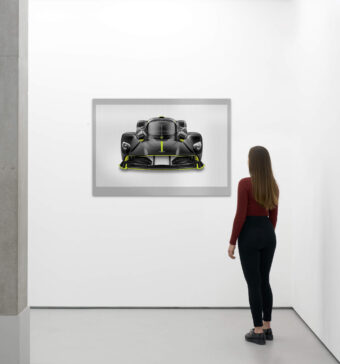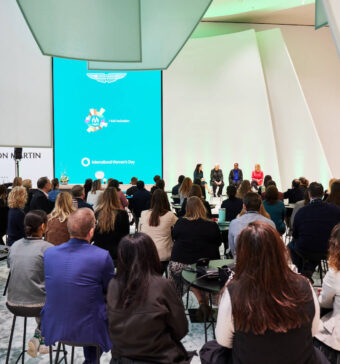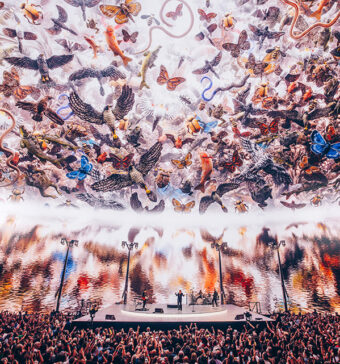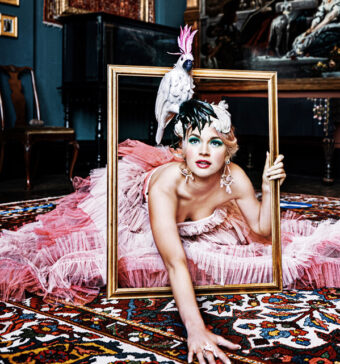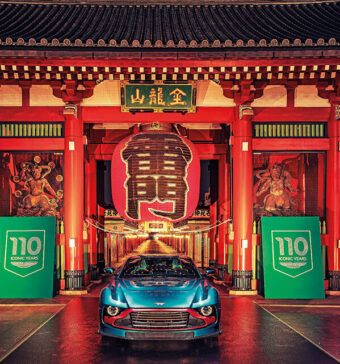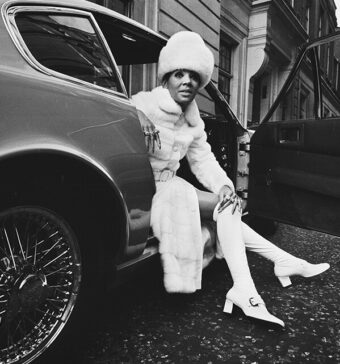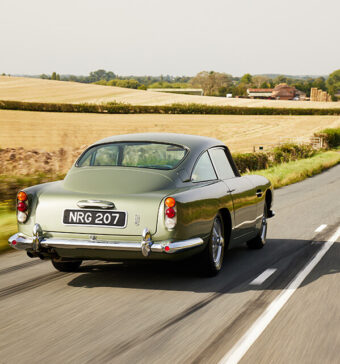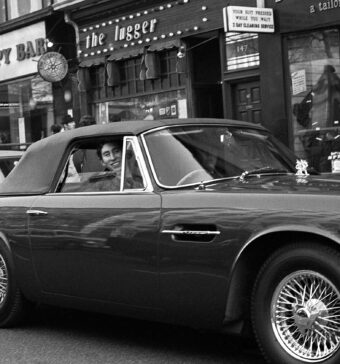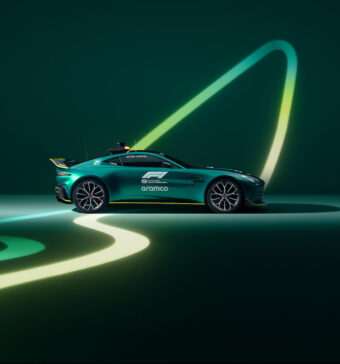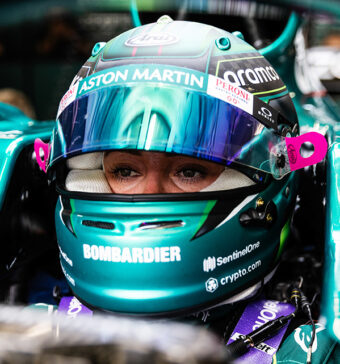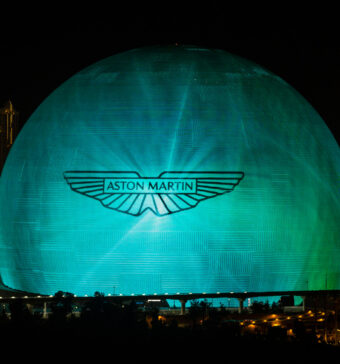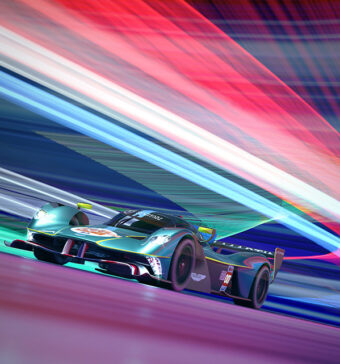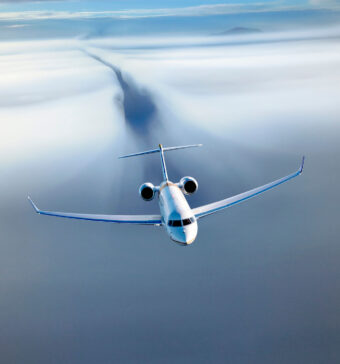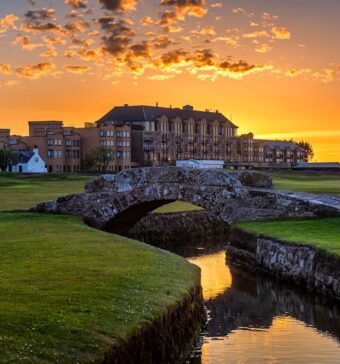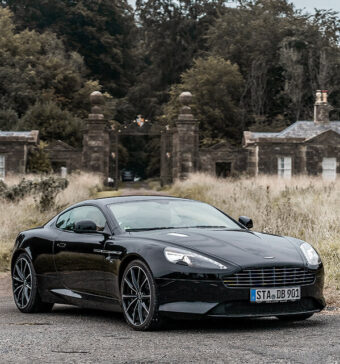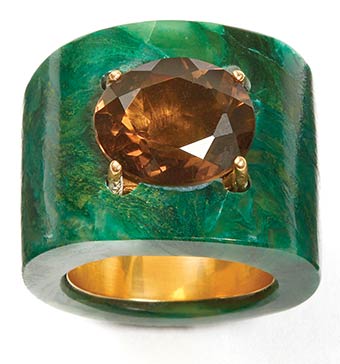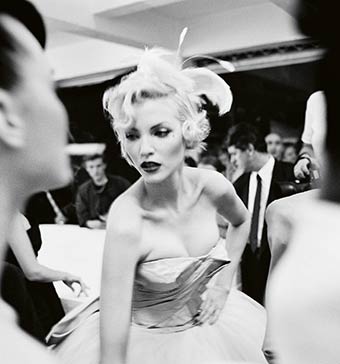The greatest show on earth is currently parked on a gigantic lot in Las Vegas, just a small space hop from the city’s famous strip. If you squint, it looks as though it just landed from space, a huge electronic marble the size of a sports arena, an upended sports arena at that. It’s not a casino, not a hotel, nor one of the extravagant new world-beating restaurants that the desert town has managed to attract over the last few years. No, the greatest show on earth is an enormous globe, the likes of which you have never seen before. Anywhere.
The Las Vegas Sphere is an entertainment concept that makes places like the Hollywood Bowl or London’s O2 seem much diminished by comparison. It is a beautiful, pixelated piece of post-modernist sculpture that sits proudly above a sea of correlated kitsch and is already the most exciting venue in the US.
Everything about the Sphere is gigantic, including the cost. The project was announced in 2018 by the Madison Square Garden Company and designed by Populous, a global architectural and design practice. It was initially estimated that the project would cost $1.2 billion (£992m) but the cost continued to increase. It eventually surpassed $2 billion (£1.7bn) due to the 2021–2023 global supply-chain crisis and inflation. The final cost is estimated at $2.3 billion (£1.9bn).

And it is worth every penny, every cent. The Sphere features an 8,600-seat auditorium, with amazing immersive video and audio capabilities, a 16K resolution wraparound interior LED screen, speakers with beamforming, and wave-field synthesis technologies, as well as 4D physical effects.
Since Vegas experienced its first proper reboot in the 1990s – when it finally bid farewell to the hotels and casinos that had populated the town since the infamous Rat Pack days of the 1950s (when the likes of Frank Sinatra, Dean Martin and Shirley MacLaine attracted crowds from all over the world), the destination has been in the ascendancy. It is now not just a gambling city, and hasn’t been for some time, but has pivoted to a luxury entertainment and culinary centre that needs top-drawer talent to attract a top-level crowd. To wit: Prince, Elton John, Adele and now U2, who started their residency at the Sphere at the end of September 2023, playing their Achtung Baby album.
For the last 30 years or so, U2 has consistently reinvented the live experience, producing a succession of mammoth, immersive stadium tours that become genuine spectacles. And they did it again with the world’s largest marble. Characterised by a 90m-tall circular exterior covered in a mind-boggling LED screen, the Sphere contains a steeply seated auditorium, with an enormous wraparound screen. Billed as the largest LED screen in the world, it features 268,435,456 pixels (I didn’t count), the equivalent of 72 gargantuan televisions. There are bells, there are whistles, and there is everything in between.
I saw U2’s first show in the Sphere, and I have to say it was one of the most impressive gigs I’ve ever seen. It might just be the most impressive gig I’ve ever seen. The entire two-hour-plus show was accompanied by a vast array of visuals, many of which were panoramic vistas that often made you feel as though you were actually outside.


“What a fancy pad,” said Bono, as he stood on a stage modelled on Brian Eno’s 2021 artwork Turntable. “Look at all this… stuff!” As U2 performed their song Desire, the group included a snippet of the Beatles’ single Love Me Do. When the song moment concluded, Bono called out Paul McCartney, who had flown in especially to see the show, saying “Macca is in the house tonight. Paul McCartney is here.” The mere mention of the former Beatle was enough to send the crowd into a kind of ecstasy. And we applauded like crazy. “Just know that we love you, and we’ve stolen a lot of your songs,” Bono continued, a massive smile on his face.
As the band tore into Achtung Baby, interspersed with many of their greatest hits, the audience stared at the phantasmagoric abundance around them, surrendering themselves to sensory overload. Initially, it felt like being in the movie Tron, trapped in a giant computer game, but after a while it morphed into a truly magical and wholeheartedly original journey through space and time. You really do have to see it to believe it. Designed by longstanding U2 collaborator Willie Williams, the show features material commissioned from a number of artists, including Brian Eno, Es Devlin and Industrial Light & Magic. The sound was built by German AV specialists Holoplot (who also worked on David Hockney’s Lightroom installation in King’s Cross). The system consists of a matrix of 167,000 speakers integrated behind the screen, designed to give everyone in the room a slightly different experience.
Backstage before the show you could sense the band were nervous – hardly surprising when you consider that this was their first live venture without their original drummer, Larry Mullen (who was recovering from back surgery). But they disguised it well, because U2, the greatest live act in the world (copyright: all newspapers), were about to do what they are best at: convening, entertaining and giving meaning to the art of performance. Yet again, U2 had reinvented the 21st-century live experience.
For the Sphere concerts, the trio began by trying to brainstorm a new type of show and its supporting visual concepts, all the while imagining the physical space of the venue in which the performances would take place. Williams said he went to great lengths to explain to the band that they were “making an ocean liner, not a dinghy”, and that once they had decided on a direction, they would not be able to shift course quickly due to the production’s heavy dependencies on video. Williams likened the task to creating the “biggest art project in the history of our species whilst running a three-legged obstacle course”.
One of the many remarkable things about the Sphere is the fact that the exterior is also covered in LED lights, which means it can be used as an electronic billboard. During the Las Vegas Grand Prix in November 2023, Aston Martin used the Sphere for an advertising blitz, creating a wholly new type of branding. As part of Aston Martin’s Las Vegas Grand Prix partnership, Aston Martin debuted an immersive advertisement that was the perfect accompaniment to a wild weekend of F1 frenzy.
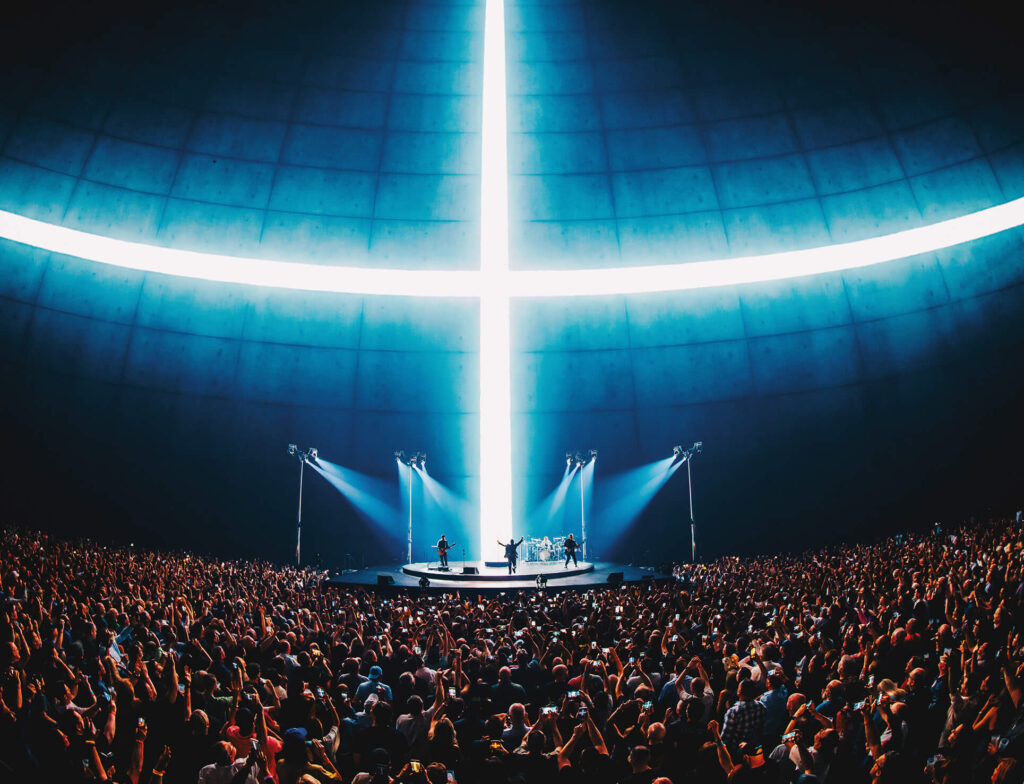
Visible from the circuit and repeated multiple times daily until lights out at the first Las Vegas Grand Prix in 41 years, the engaging 90-second sequence on the Sphere commenced by illuminating Aston Martin’s iconic wings, before introducing the Scarab Beetle – the inspiration from which the Aston Martin winged marque was born in the 1930s, at the height of popular Egyptology and representing new beginnings. The Beetle appeared to ‘shatter’, before a dramatic reveal of the Aston Martin Aramco Formula 1® Team’s AMR23 racecar, with swirling smoke from its tyres filling the rest of the screen. As the smoke cleared, the world’s most powerful luxury SUV, DBX707, and the world’s first super tourer, DB12, appeared in what was the largest-ever digital display of a car.
Utilising the latest CGI technology, the ad gave the optical illusion of depth within the Sphere, further igniting the senses of onlookers with an authentic impression of Aston Martin’s high-performance products on a huge, never-before-seen scale. And it was very, very green. Very Aston Martin green.
For some, watching the ad reveal was as exciting as watching the race itself. The Aston Martin logo was so big it could actually be seen from space and, for a while, it looked as though they actually owned the city. To me, it reminded me of the very first time I flew into Linate airport in Milan. As the plane landed, I saw a huge Armani logo on one of the aircraft hangers, and it looked as though the entire city belonged to Giorgio Armani. It is still there today, a signifier not just of the fashion designer’s longevity but also his omnipotence. The Aston Martin logo was no less important, as it contributed to the largest-ever F1 race weekend marketing presence. In Vegas that weekend, Aston Martin was everywhere.
“With the United States being our largest market and brand community, the Las Vegas Grand Prix created a new landmark in the F1 calendar, with our biggest ever race marketing and VIP hospitality presence,” said Marco Mattiacci, the Global Chief Brand and Commercial Officer of Aston Martin. “Targeting much more than brand awareness, our activities are an example of how we are maximising the tremendous global platform of F1 to drive the reappraisal of Aston Martin amongst new audiences, infuse our products with the sport’s high-performance DNA and connect our community through unique luxury experiences.”
After the Grand Prix, which was thought to be such a success that plans are already underway for next year’s event, U2 moved back into the Sphere for a series of shows that stretched into February 2024. Like I said, it is the greatest show on earth. One that can be seen all the way in space.







